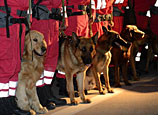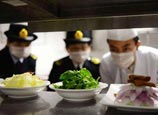
"We have been trying to get financing from various channels, but the gap is still huge," said Liang.
The area worst hit by the H7N9 crisis is east China, where the largest number of human cases of the virus have been recorded.
The wholesale price of live chicken was three to four yuan per kg on April 15, one-third of the price before the outbreak, according to the Jiangsu Provincial Commission of Rural Affairs.
The wholesale price of eggs was 6.5 yuan per kg, down 20 percent compared with that of late March.
Four cities in Jiangsu, including the provincial capital of Nanjing, have shut down live poultry trading markets, stagnating sales of poultry.
In Xuzhou City alone, there are more than 300,000 live poultry to be sold every day.
Jiangsu Lihua Animal Husbandry Co. Ltd., which sold 160 million broilers in 2012 and reaped 3 billion yuan in revenue, has killed more than 2.73 million growing broilers since the H7N9 outbreak as raising them will be cost-prohibitive, according to the commission.
As a whole, China's poultry industry suffered losses amounting to 10 billion yuan in the week after the first case of H7N9 was confirmed, according to the China Animal Agriculture Association.
The real impact of the disease will be far more than that as many consumers have been reluctant to eat poultry and some restaurants have stopped offering poultry dishes. The number of tourists visiting the affected provinces is also likely to decline.


















 Teenager saves mom with his bare hands
Teenager saves mom with his bare hands


![]()
